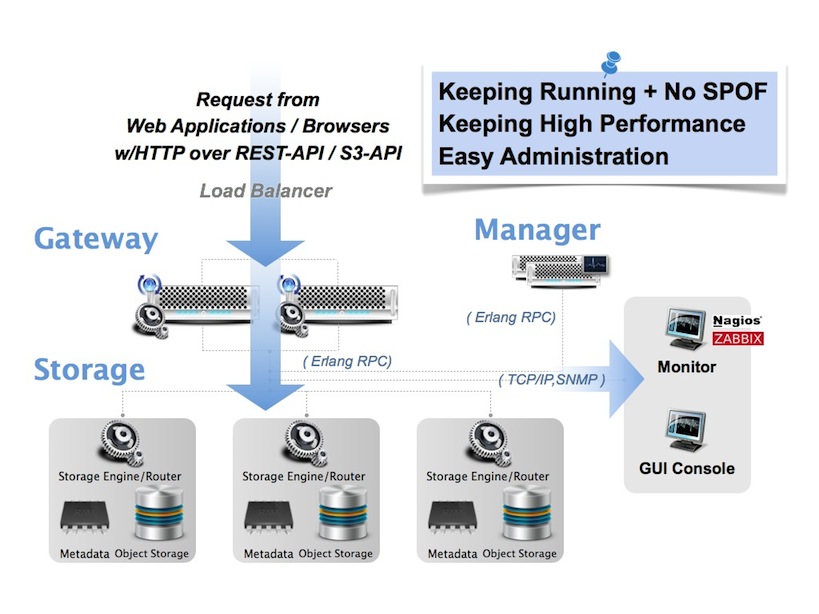Introduction¶
LeoFS is a highly scalable, fault-tolerant unstructured object storage system for the Web.
LeoFS provides High Cost Performance Ratio. It allows you to build LeoFS clusters using commodity hardware on top of the Linux operating system. LeoFS will provide very good performance even on commodity hardware. LeoFS will require a smaller cluster than other storage to achieve the same performance. LeoFS is also very easy to setup and to operate.
LeoFS provides High Reliability thanks to its great design on top of the Erlang/OTP capabilities. Erlang/OTP is known for being used in production systems for years with a solid nine nines (99.9999999%) availability, and LeoFS is no exception. A LeoFS system will stay up regardless of software errors or hardware failures happening inside the cluster.
LeoFS provides High Scalability. Adding and removing nodes is simple and quick, allowing you to react swiftly when your needs change. A LeoFS cluster can be thought as elastic storage that you can stretch as much and as often as you need.

LeoFS consists of 3 applications - LeoFS Storage, LeoFS Gateway and LeoFS Manager which depend on Erlang.
LeoFS Gateway handles http-request and http-response from any clients when using REST-API OR S3-API. Also, it is already built in the object-cache mechanism (memory and disk cache).
LeoFS Storage handles GET, PUT and DELETE objects as well as metadata. Also, it has replicator, recoverer and queueing mechanism in order to keep running a storage node and realise eventual consistency.
LeoFS Manager always monitors LeoFS Gateway and LeoFS Storage nodes. The main monitoring status are Node status and RING’s checksum in order to realise to keep high availability and keep data consistency.
